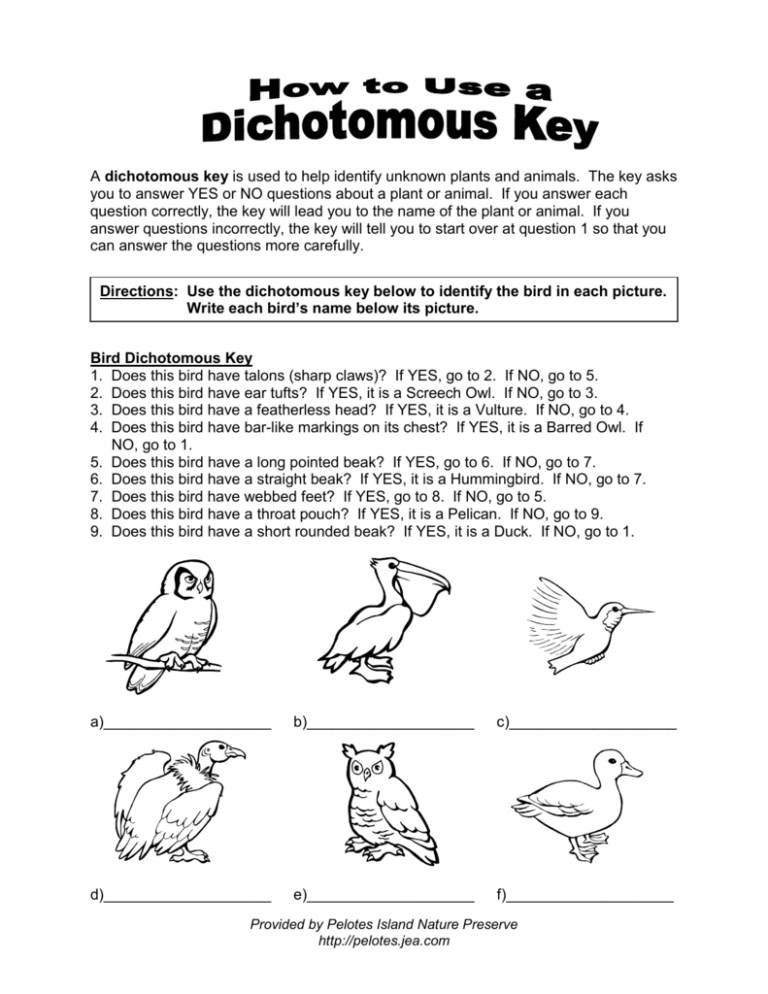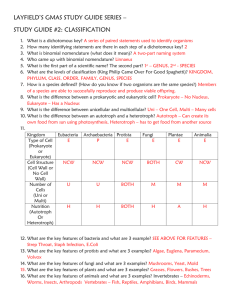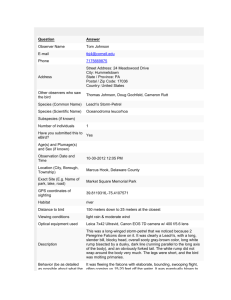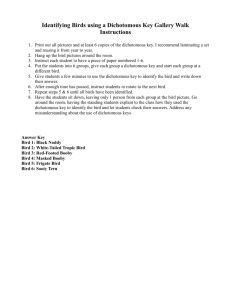Bird Identification with Dichotomous Key Worksheet
advertisement

A dichotomous key is used to help identify unknown plants and animals. The key asks you to answer YES or NO questions about a plant or animal. If you answer each question correctly, the key will lead you to the name of the plant or animal. If you answer questions incorrectly, the key will tell you to start over at question 1 so that you can answer the questions more carefully. Directions: Use the dichotomous key below to identify the bird in each picture. Write each bird’s name below its picture. Bird Dichotomous Key 1. Does this bird have talons (sharp claws)? If YES, go to 2. If NO, go to 5. 2. Does this bird have ear tufts? If YES, it is a Screech Owl. If NO, go to 3. 3. Does this bird have a featherless head? If YES, it is a Vulture. If NO, go to 4. 4. Does this bird have bar-like markings on its chest? If YES, it is a Barred Owl. If NO, go to 1. 5. Does this bird have a long pointed beak? If YES, go to 6. If NO, go to 7. 6. Does this bird have a straight beak? If YES, it is a Hummingbird. If NO, go to 7. 7. Does this bird have webbed feet? If YES, go to 8. If NO, go to 5. 8. Does this bird have a throat pouch? If YES, it is a Pelican. If NO, go to 9. 9. Does this bird have a short rounded beak? If YES, it is a Duck. If NO, go to 1. a)____________________ b)____________________ c)____________________ d)____________________ e)____________________ f)____________________ Provided by Pelotes Island Nature Preserve http://pelotes.jea.com How to Use a Dichotomous Key – ANSWERS a) b) c) d) e) f) Barred Owl (Question Path: 1, 2, 3, 4) Pelican (Question Path 1, 5, 6, 7, 8) Hummingbird (Question Path 1, 5, 6) Vulture (Question Path 1, 2, 3) Screech Owl (Question Path 1, 2) Duck (Question Path 1, 5, 7, 8, 9) Provided by Pelotes Island Nature Preserve http://pelotes.jea.com







